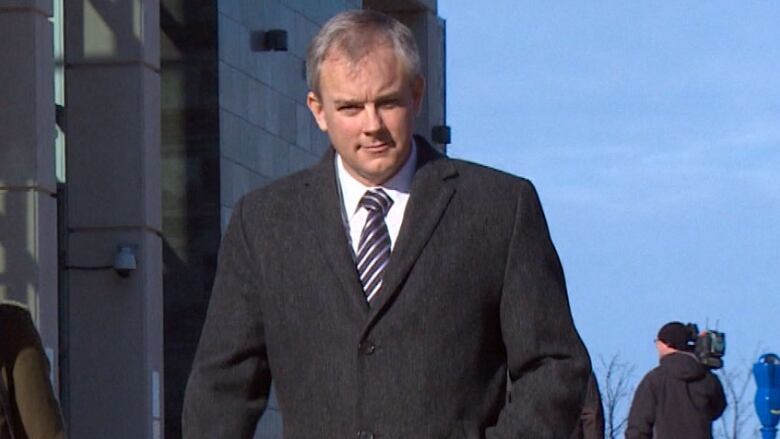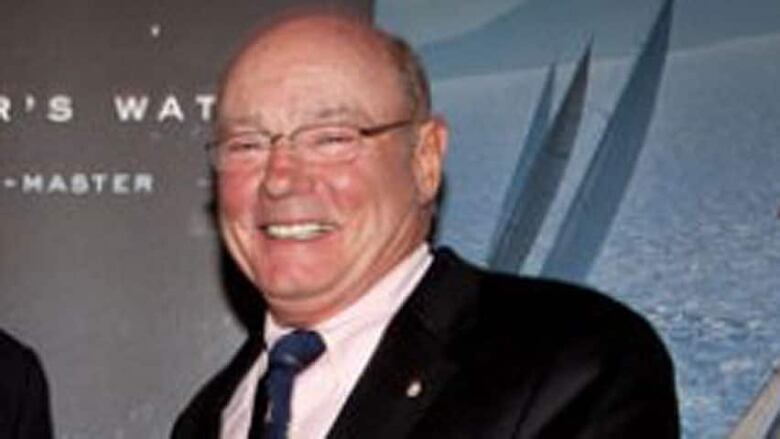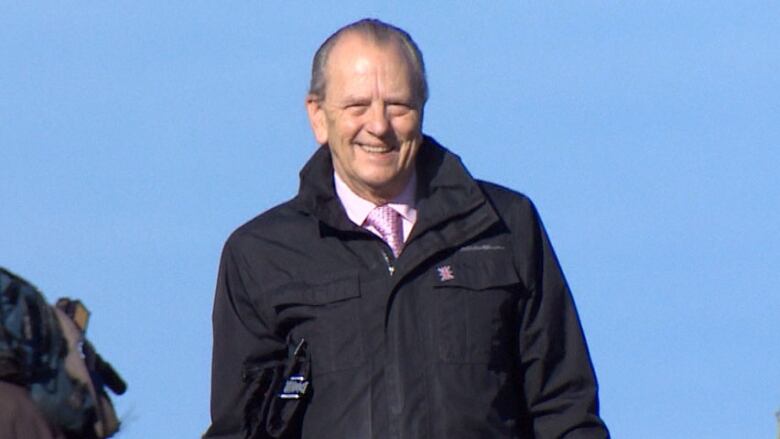Richard Oland's last computer use focus of son's murder trial
Computer activity could have continued 'for hours' after Dennis Oland left victim's office, expert says

Dennis Oland's defence team spent Monday attempting to dismiss the significance of the Crown's evidence that human activity on Richard Oland's office computer stopped minutes after his son came to visit him on the day police believe he was killed.
Forensic computer expert Geoffrey Fellows testified thatRichardOlandcould have been using his computer "for hours" after DennisOlandleft his office on July 6, 2011.
Although the last trace ofhuman interaction with the victim'scomputer was at 5:39 p.m.,there are several computer activities that can't be detected, said Fellows, who travelled from the United Kingdom to testify.
- Live blog:Dennis Oland's second-degree murder trial: Nov. 30
- On mobile? Get live coverage of the trial here
Richard Oland's bludgeoned bodywas discoveredlying face down in a pool of blood in his investment firm officethe following morning.The 69-year-old prominent businessmanhadsuffered 45 blunt and sharp force injuries to his head, neck and hands.

Olandtold police he went tovisit his father at his officearound 5:30 p.m.on the night in question,and left around 6:30 p.m.
The victim'scomputers were still running when his body was found, the trial has heard.
Fellows found the last human activity on the victim'smain computer was opening a yachtingwebsiteabout the Southern Ocean Racing Conference.
Reading a static websitedoes not leave any traces, provided the user doesn't change the page, Fellows said under questioning by defence lawyer Alan Gold. It could have been open for "10 to 12hours," with no way to know, he said.

The defence also asked Fellows to analyze Richard Oland's computer usage history for previous daysto determine how unusual it was for human activity to stop around 5:39 p.m.
The Crown has tried to suggest it "somehow proves something you are to consider important and significant," defence lawyer Gary Miller had said to the jury last week during his opening statement.
"But how can you do that unless you check the computer evidence to see what he did on previous days?"
Fellows looked at June 13-17, 2011, and found human activity on all three of Oland's office computers onthose days endedbetween 3:05p.m. and 6:30 p.m.
Web page open 'for hours' or '1second'
Under cross-examination by Crown prosecutor Derek Weaver, Fellows agreed that while the yachting web page could have been open "for hours," it could have alsobeen openfor only "one second."
Fellowsalso agreed that it wasn't a very "content heavy" web page and to "read it once wouldn't take very long."
The web browser was closed by the time Richard Oland's body was discovered. Fellows could not say when it was closed, only that it was "at some point" prior to police taking a screen shot of the computer.

Weaver also challenged Fellows' statement about the number of human activities on computers that don't leave traces, arguing they are limited.
Some of the more common types ofhuman activities, such as opening a web browser,web page or an email, or updating, saving or deletinga document, for example, can be detected, submitted Weaver. Fellows agreed.
As to Richard Oland'spriorcomputer history, Weaver asked Fellowswhether the data he used in his analysis is frequently unreliable. Fellows said it is because it is constantly being altered andoverwritten.
So you can't say for certain what occurred on those days?asked Weaver. Correct, said Fellows.
The trial is in recess until Tuesday at 9:30 a.m.
Dennis Oland will testify in his own defence in the days to come, his lawyers have said.His mother, wife, sister, uncle and a friend will also testify on his behalf.
The trial is scheduled to run until Dec. 18.












_(720p).jpg)


 OFFICIAL HD MUSIC VIDEO.jpg)
.jpg)



























































































